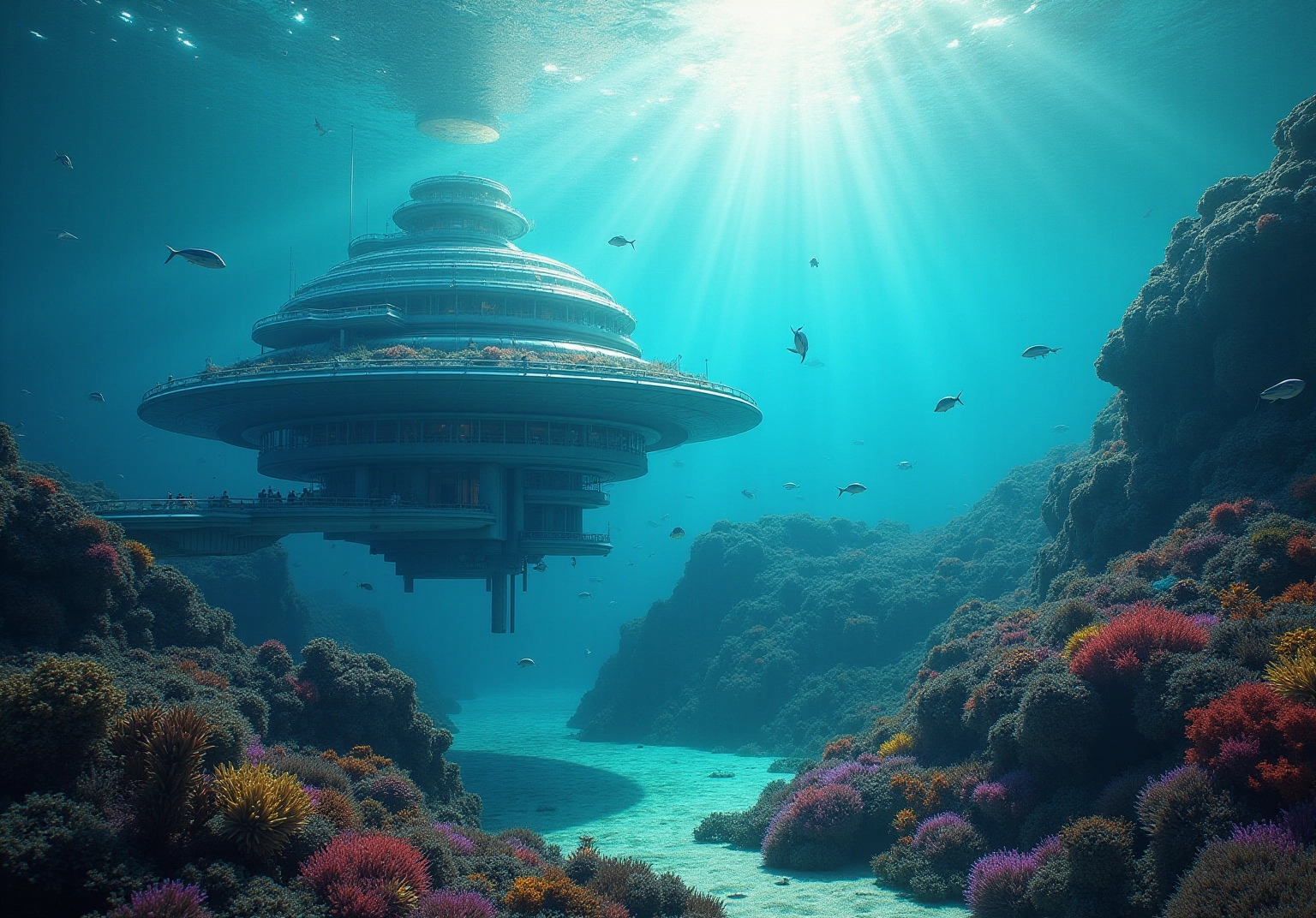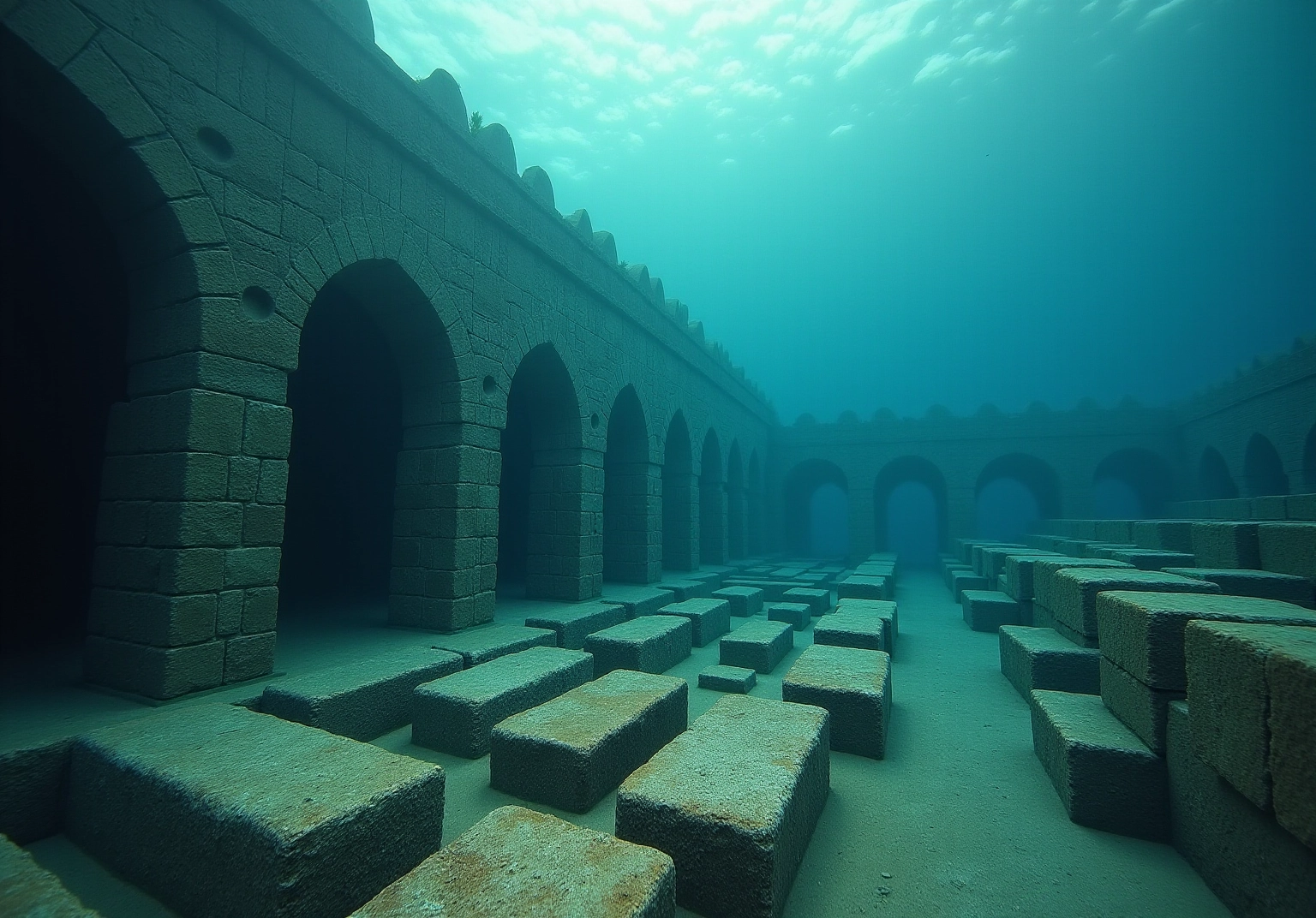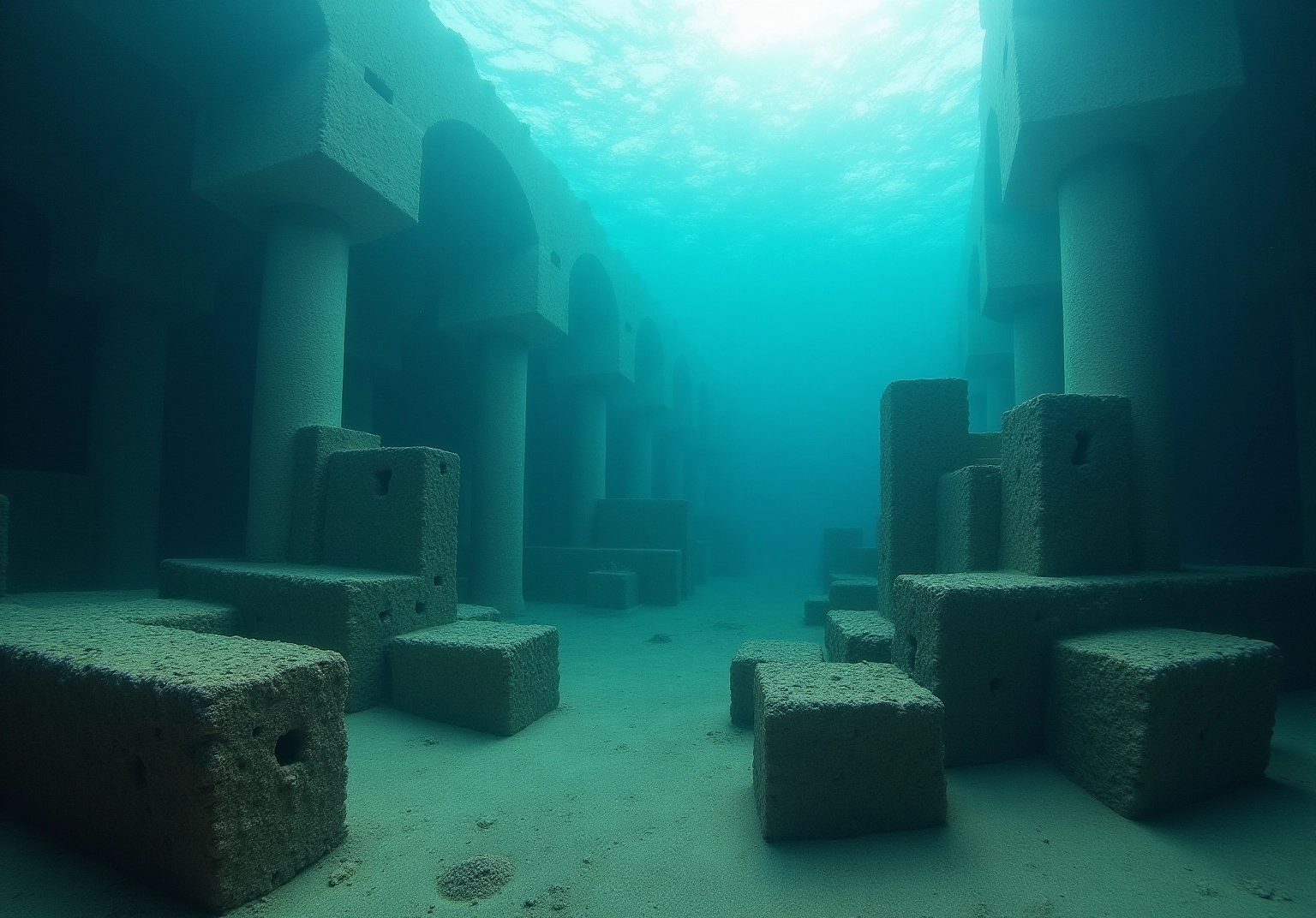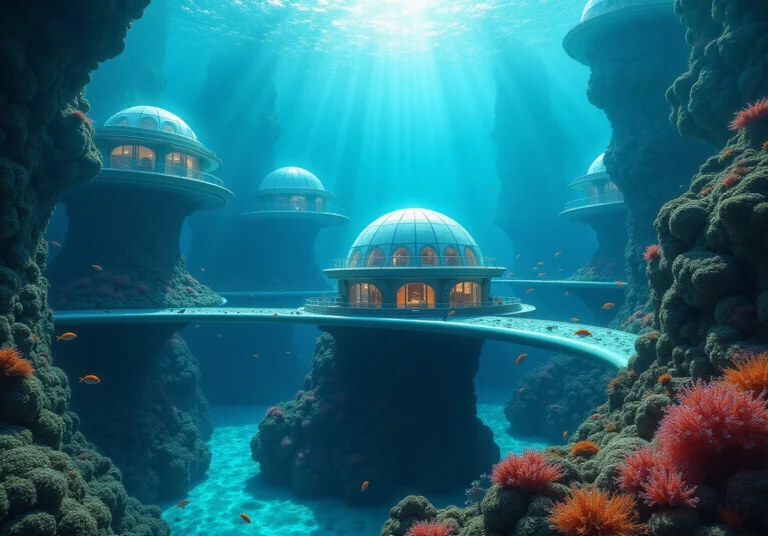Overview
Have you ever imagined exploring underwater cities? These fascinating, man-made communities are submerged beneath oceans or lakes, with historical examples like Atlantis and Dwarka showcasing incredible urban planning and architectural ingenuity! The significance of these lost worlds is emphasized through archaeological findings that reveal insights into ancient civilizations. It’s like uncovering a treasure chest of history!
But wait, there’s more! The article also dives into modern proposals for sustainable underwater living, highlighting potential lessons for future urban development as we face environmental challenges. Isn’t it exciting to think about how these ancient wonders can inspire our future? So, grab a cup of coffee, and let’s explore the depths of these incredible underwater cities together!
Key Highlights:
- Underwater cities are man-made communities located beneath oceans or lakes, showcasing unique architectural styles adapted to aquatic environments.
- Historical examples include Atlantis and the submerged ruins of Dwarka, believed to have been advanced settlements lost to rising sea levels.
- Key features of underwater cities include innovative engineering, corrosion-resistant materials, and architectural harmony with marine ecosystems.
- Modern proposals like the Ocean Spiral aim to create sustainable living spaces underwater, accommodating up to 5,000 residents.
- The historical significance of underwater cities is highlighted by archaeological findings, such as those from Dwarka, which reveal advanced urban planning and cultural practises.
- Underwater archaeology is gaining traction, allowing researchers to explore submerged sites and understand ancient civilizations better.
- The exploration of underwater cities informs contemporary discussions on sustainable living and urban design, offering lessons for future urban development.
Introduction
Have you ever been captivated by the allure of underwater cities? They blend myth with reality, revealing remnants of ancient civilizations hidden beneath the waves. Just think about it—these submerged urban landscapes, from the legendary Atlantis to the archaeological marvel of Dwarka, showcase not only the ingenuity of human engineering but also our profound connection with water.
As we face contemporary challenges like climate change, exploring these underwater habitats raises a fascinating question: Could the lessons learned from these historical sites inspire a sustainable future for urban living? It’s an exciting thought, isn’t it? Let’s dive deeper into this intriguing topic together!
Define Underwater Cities: Characteristics and Examples
Have you ever imagined what life might be like in discovered underwater cities? These fascinating, man-made communities, which are discovered underwater cities, sit beneath the surface of oceans or lakes, showcasing unique architectural styles that adapt beautifully to their aquatic surroundings. Think about the legendary Atlantis, often depicted in stories and myths, or the submerged ruins of Dwarka in India, both of which are examples of discovered underwater cities believed to be historical settlements lost to the sea. How cool is that?
Key features of these submerged urban areas include:
- Innovative engineering techniques designed to withstand water pressure
- The use of corrosion-resistant materials
- Architectural plans that harmonize with marine ecosystems
One exciting modern proposal is the Ocean Spiral, which illustrates the potential for sustainable living spaces beneath the waves. This advanced underwater city, dreamed up by Japanese architects, aims to create a self-sustaining environment for up to 5,000 residents! Picture a floating central dome connected to a resource center on the ocean floor by a 15-kilometer helix-shaped pathway. Isn’t that incredible?
Such projects highlight the growing concept of aquatic living, blending creativity with practicality. As we face rising sea levels and environmental challenges, the discovered underwater cities could offer a glimpse into the future of how we might live. So, are you ready to dive into the possibilities of underwater life?

Explore the Historical Origins of Underwater Cities
The story of submerged metropolises begins with ancient cultures that thrived near water bodies and includes the discovered underwater cities. Have you ever heard of Atlantis? Plato described it as a symbol of advanced societies that once existed, only to meet their fate through natural disasters. Exciting, right? Archaeological evidence shows that settlements like Dwarka, believed to date back to around 2000 BC, were cleverly built along coastlines and are now part of the discovered underwater cities, submerged due to rising sea levels or tectonic shifts. Between 1983 and 1990, excavations revealed fortified foundations, stone blocks, and irrigation streams, showcasing just how advanced these ancient communities were.
These urban areas, which include discovered underwater cities, often reflected the cultural values and technological skills of their time, with people adapting to their aquatic surroundings. Fast forward to today, and you’ll find that the idea of underwater living is gaining popularity! Thanks to technological advancements and a rising interest in sustainable living, there are modern proposals for underwater habitats aimed at tackling overpopulation and environmental issues.
Prime Minister Narendra Modi even described his visit to Dwarka as divine, highlighting the location’s rich historical and spiritual significance. Isn’t it fascinating how our relationship with water continues to evolve? This journey reflects a timeless human fascination with the connection between civilization and bodies of water, intertwining both historical and contemporary stories of adaptation and resilience, particularly those involving discovered underwater cities.

Assess the Cultural and Archaeological Significance of Underwater Cities
The discovered underwater cities are truly invaluable cultural and archaeological treasures, acting as time capsules that preserve the legacies of ancient civilizations. These fascinating sites offer profound insights into architectural practices, social structures, and environmental adaptations. For example, the submerged ruins of an ancient city, thought to be a thriving city-state, have revealed intricate designs and artifacts that shed light on the lifestyle and trade practices of its inhabitants, dating back to around 2000 BC. Recent excavations have uncovered stone blocks, pillars, and evidence of advanced urban planning, reinforcing the site’s historical significance as a major trading hub.
The field of underwater archaeology is gaining momentum, allowing researchers to explore these often-inaccessible sites. The Archaeological Survey of India (ASI) has been actively investigating the ancient site, with ongoing efforts to uncover its city walls and other foundational structures. As archaeologist SR Rao mentions, “The archaeological evidence from the site of Dwarka, which is underwater, confirms the existence of a city-state, with a couple of satellite towns, dated around 1500 BC.” These explorations not only deepen our understanding of ancient urban life but also highlight the urgent need for preservation in the face of climate change and rising sea levels, which threaten these submerged treasures.
Moreover, examining submerged metropolises sparks modern conversations about sustainable living and urban design. As architects and planners tackle the challenges posed by environmental changes, the lessons learned from these ancient sites can inspire innovative approaches to modern urban development, fostering a harmonious relationship between human settlements and their natural surroundings. Exploring underwater cities, such as Dwarka, not only enriches our historical narrative but also shapes our vision for the future of urban living through the discoveries of underwater cities.

Conclusion
Discovered underwater cities are truly remarkable! They represent an exciting blend of history, culture, and innovation, showcasing how human ingenuity adapts to the challenges of the natural world. From the legendary Atlantis to the archaeological wonders of Dwarka, these submerged urban areas illustrate a rich tapestry of civilizations that have thrived near water. As we continue to explore these sites, they reveal not only the architectural prowess of ancient societies but also remind us of our evolving relationship with the environment.
What’s fascinating about these underwater cities is their cultural and archaeological significance. They provide valuable lessons about resilience and adaptation. Take Dwarka, for example—its findings highlight the advanced urban planning and social structures of past civilizations. And let’s not forget the modern proposals for underwater habitats! They signal a potential future where sustainable living could truly become a reality. As technology progresses, the lessons learned from these ancient cities might inspire innovative urban designs that harmonize beautifully with our changing ecosystems.
Reflecting on the significance of these underwater cities really emphasizes the importance of preserving these historical treasures for future generations. They enrich our understanding of human history and challenge us to think critically about how we can create sustainable environments amidst rising sea levels and climate change. Engaging with the wonders of underwater cities encourages a broader conversation about the future of urban living, urging us all to collectively protect these submerged legacies while exploring the possibilities they hold for the future!
Frequently Asked Questions
What are underwater cities?
Underwater cities are man-made communities located beneath the surface of oceans or lakes, featuring unique architectural styles that adapt to their aquatic surroundings.
Can you provide examples of discovered underwater cities?
Examples of discovered underwater cities include the legendary Atlantis, often depicted in myths, and the submerged ruins of Dwarka in India, both believed to be historical settlements lost to the sea.
What are the key characteristics of underwater cities?
Key characteristics of underwater cities include innovative engineering techniques to withstand water pressure, the use of corrosion-resistant materials, and architectural designs that harmonize with marine ecosystems.
What is the Ocean Spiral?
The Ocean Spiral is a modern proposal for a sustainable underwater city designed by Japanese architects, aiming to create a self-sustaining environment for up to 5,000 residents, featuring a floating central dome connected to a resource center on the ocean floor by a 15-kilometer helix-shaped pathway.
Why are underwater cities considered significant for the future?
Underwater cities are significant as they highlight the growing concept of aquatic living and may offer solutions for sustainable living in response to rising sea levels and environmental challenges.


































